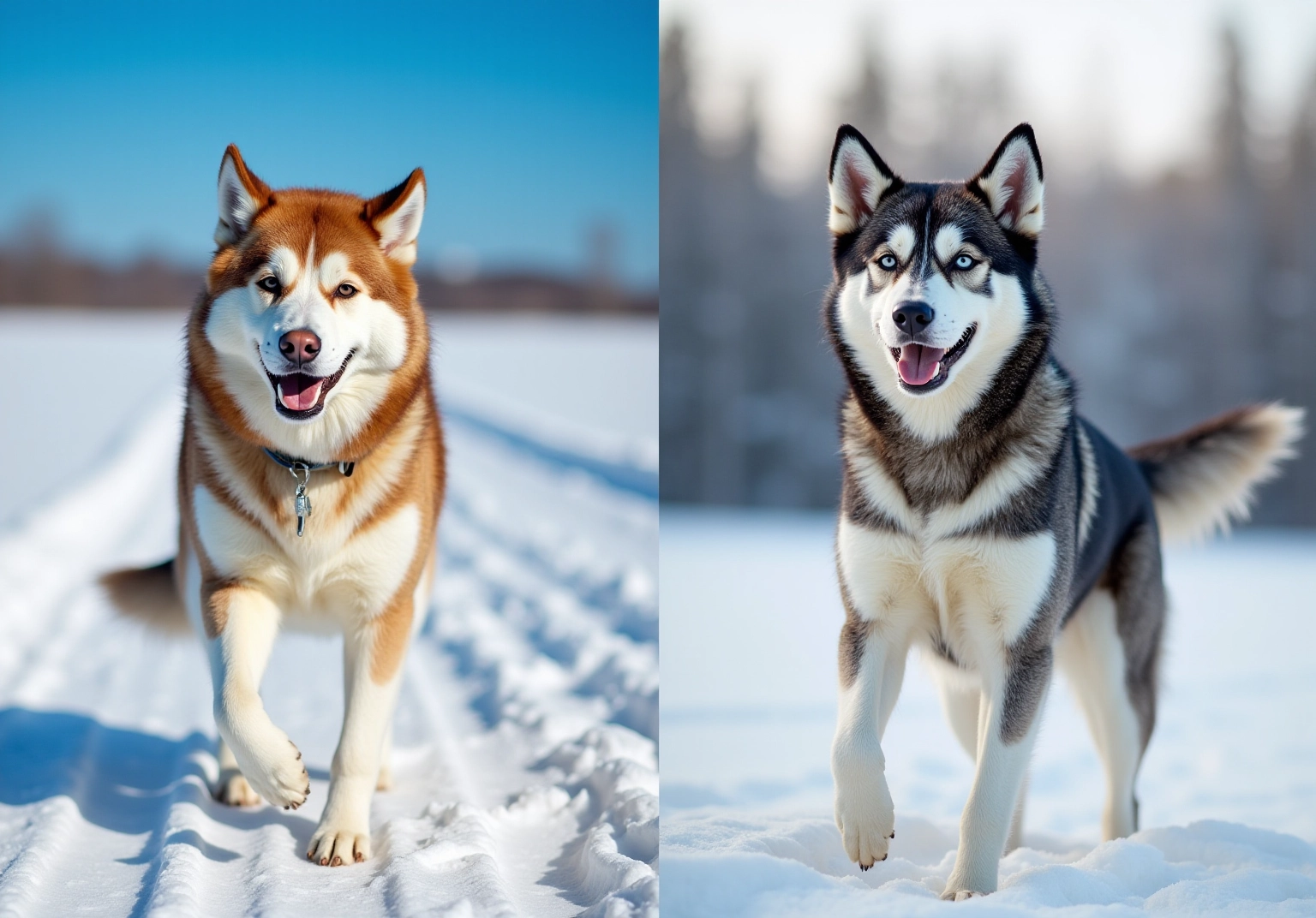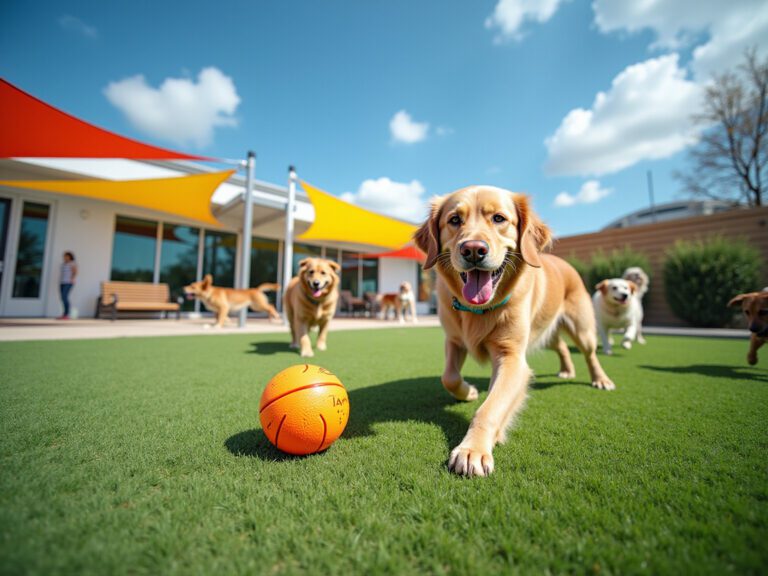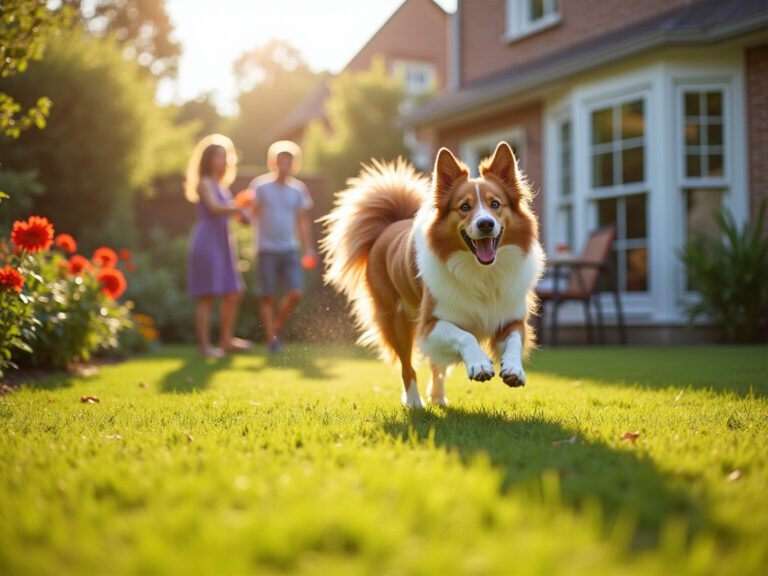Alaskan Husky vs Siberian Husky: Key Differences in Traits and Care
Overview
Understanding the differences between Alaskan Huskies and Siberian Huskies is essential for every pet owner who wants the best for their furry family members. These two breeds, while both beautiful and beloved, have distinct origins and characteristics that can greatly influence their care needs.
-
Alaskan Huskies, a mixed breed developed for performance and endurance, thrive in active environments and require dedicated care to meet their energetic demands.
-
On the other hand, Siberian Huskies are purebreds known for their specific traits and temperament. Their unique personalities shape how they interact with families and their suitability for various lifestyles.
As you consider which breed might be the right fit for your home, it’s important to reflect on your own lifestyle and how much time and energy you can devote to your pet.
At Adventure Den, we understand that every pet is an individual with unique needs. Our nurturing environment is designed to support the well-being of both Alaskan and Siberian Huskies, ensuring they receive the love and attention they deserve.
Whether you’re drawn to the spirited nature of an Alaskan Husky or the charming demeanor of a Siberian Husky, we are here to help you make the best choice for your family.
Let us guide you in creating a loving home for your new companion. Together, we can ensure that your pet thrives in a supportive and caring environment.
Introduction
The world of Huskies is a rich tapestry woven with history and diversity, and many pet owners often find themselves pondering the choice between the Alaskan and Siberian varieties. Each breed carries its own unique lineage and characteristics, shaped by the distinct environments and cultures from which they originate. This article lovingly explores the essential differences between Alaskan Huskies and Siberian Huskies, offering insights into their physical traits, temperaments, and health considerations. With so much at stake in choosing the right companion for your furry family members, the question arises: which Husky will best suit your lifestyle and needs?
Explore the Origins and Historical Significance of Alaskan and Siberian Huskies
The comparison of Alaskan Husky vs Siberian Husky reveals their distinct origins, which beautifully illustrate their unique roles in human history. As a type bred for performance in sled dog racing and various working roles, the Husky is not a purebred but rather a blend of multiple breeds developed over thousands of years by indigenous peoples in Alaska. This lineage emphasizes endurance and strength, making these dogs truly special. Typically, Alaskan Huskies weigh between 35-75 pounds and stand 20-24 inches tall, enjoying a lifespan of 10-15 years.
In contrast, the Husky was carefully bred by the Chukchi people of Siberia, who cherished these dogs for their remarkable ability to pull sleds across vast distances in extreme climates. Recognized as a purebred by organizations like the AKC, the Siberian Husky is bred with a focus on preserving specific physical traits and temperaments. Understanding the differences in origins between the Alaskan Husky vs Siberian Husky is vital for prospective caretakers, as it sheds light on the varying needs and personalities of each breed, ultimately guiding their suitability for different lifestyles.
Historical accounts reveal that the Arctic Husky’s development was shaped by the practical demands of sledding, especially during the gold rush, while the Siberian Husky’s evolution was influenced by the Chukchi’s reliance on these dogs for survival in harsh environments. This rich history underscores the importance of recognizing the unique characteristics and care requirements in the discussion of Alaskan Husky vs Siberian Husky.
Furthermore, prospective guardians should be aware of health concerns such as Husky Encephalopathy (AHE) and Degenerative Myelopathy (DM), along with grooming needs during shedding periods. These sled dogs also have a strong prey drive, which can affect their compatibility with other animals. To ensure their well-being, mental stimulation and regular exercise are essential, making it crucial for owners to provide ample physical activity for their furry family members.
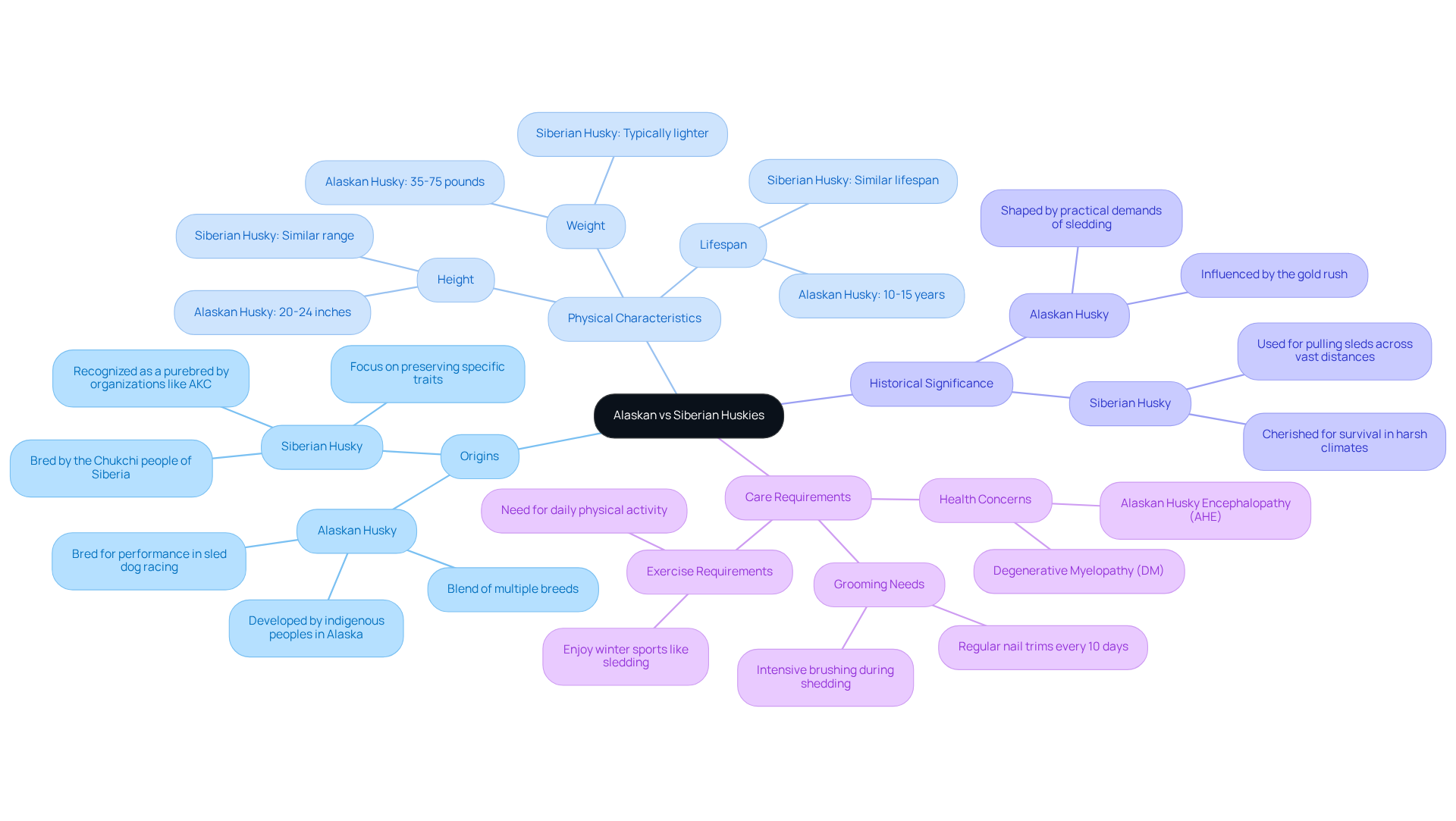
Compare Physical Traits: Size, Coat, and Color Variations
When considering the unique physical characteristics in the comparison of Alaskan husky vs Siberian husky, several important differences come to light that every pet owner should understand. These wonderful companions typically weigh between 35 to 60 pounds and stand about 20 to 23.5 inches tall, showcasing a stocky physique enhanced by a dense double coat. This beautiful coat, which can display colors like black, gray, and red, is medium-length and needs regular grooming to manage shedding effectively. In warmer climates, Siberian dogs may shed more, making frequent grooming essential to keep them comfortable and happy.
With a lifespan of 12 to 14 years, these dogs require a minimum of 2 hours of exercise each day to thrive. In contrast, Russian sled dogs are generally leaner and taller, weighing between 35 to 75 pounds and reaching heights of 20 to 26 inches. Their coats are shorter and less dense, designed for functionality rather than aesthetics. Due to their mixed breeding backgrounds, they can showcase a wide range of colors and patterns, prioritizing performance over strict breed standards.
Understanding the differences in grooming needs, exercise requirements, and long-term health considerations is crucial for prospective owners when comparing Alaskan Husky vs Siberian Husky. At Adventure Den, we are dedicated to providing a nurturing environment for your furry family members, ensuring they receive the care and attention they deserve. Embrace the journey of pet ownership with confidence, knowing you have the support of a compassionate community.
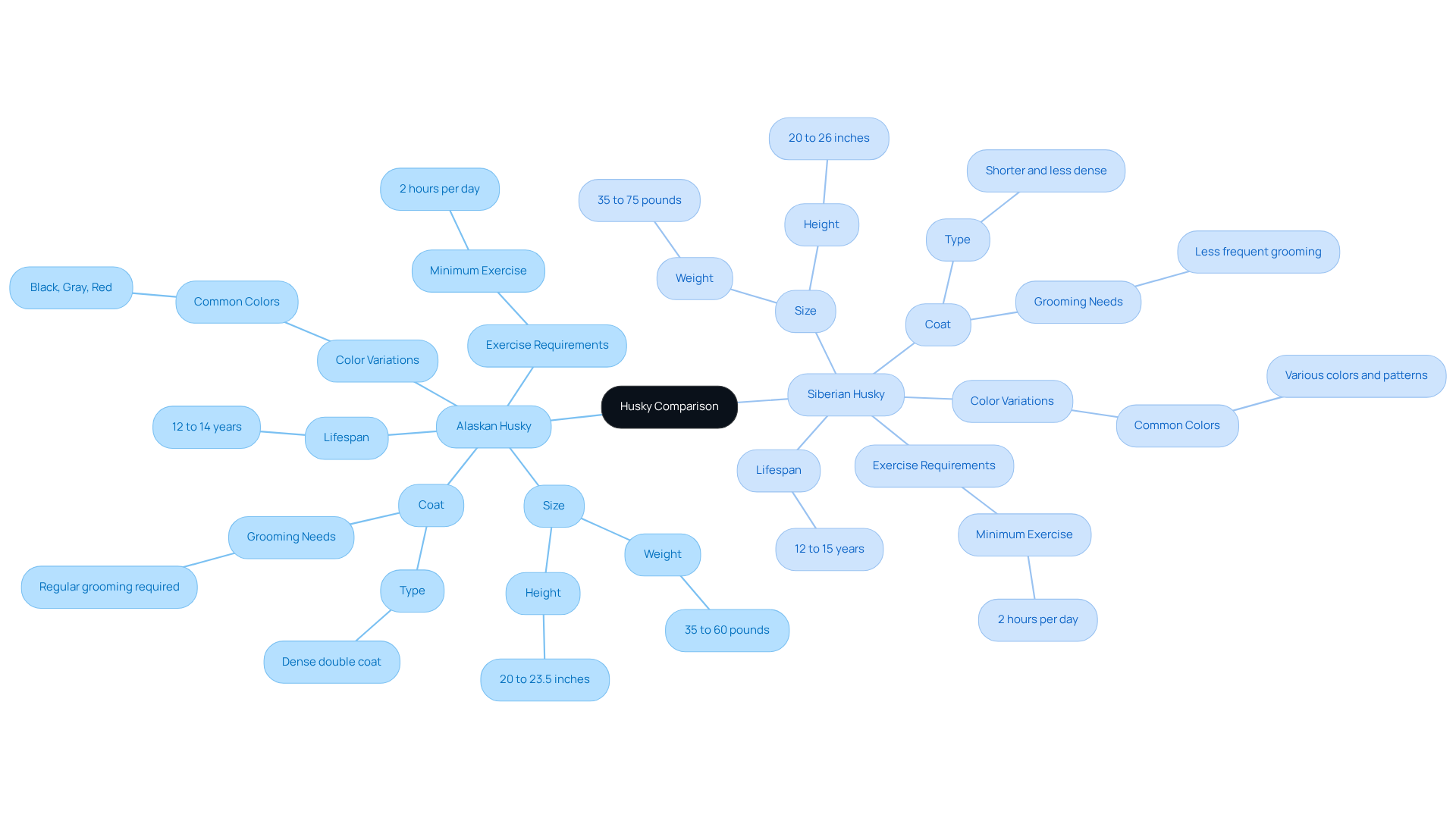
Analyze Temperament and Behavior: Energy Levels, Trainability, and Social Needs
Alaskan and northern dog breeds are truly special companions, known for their high energy levels and playful dispositions. While they share some similarities, pet owners should understand the unique temperamental traits of each breed, especially in the context of Alaskan Husky vs Siberian Husky. These dogs are often described as sociable, extroverted, and a bit self-reliant, which can be endearing yet challenging for new owners. Their playful and sometimes mischievous nature may lead to stubbornness, making consistent training and socialization essential for their well-being.
At Adventure Den, we recognize that these dogs thrive in structured environments where they can channel their energy positively. Utilizing training techniques such as positive reinforcement and keeping sessions short and engaging is crucial for maintaining their attention. In contrast, when considering the Alaskan Husky vs Siberian Husky, northern breeds tend to be more focused and driven, displaying a strong work ethic that often makes them easier to train than their Siberian counterparts. When considering the traits of Alaskan Huskies, particularly in the context of Alaskan Husky vs Siberian Husky, their breeding for specific tasks allows them to excel in obedience and responsiveness to commands, showcasing their remarkable abilities.
Both breeds flourish in social settings and benefit immensely from companionship, whether it’s from humans or fellow dogs. However, it’s important for prospective caretakers to be aware of common health issues, such as hip dysplasia and cataracts, as well as the shedding challenges associated with their thick double coats. Understanding these behavioral nuances and challenges is vital for effectively meeting your furry family members’ social and training needs. By doing so, you can ensure a harmonious relationship and a fulfilling life for your beloved pets.
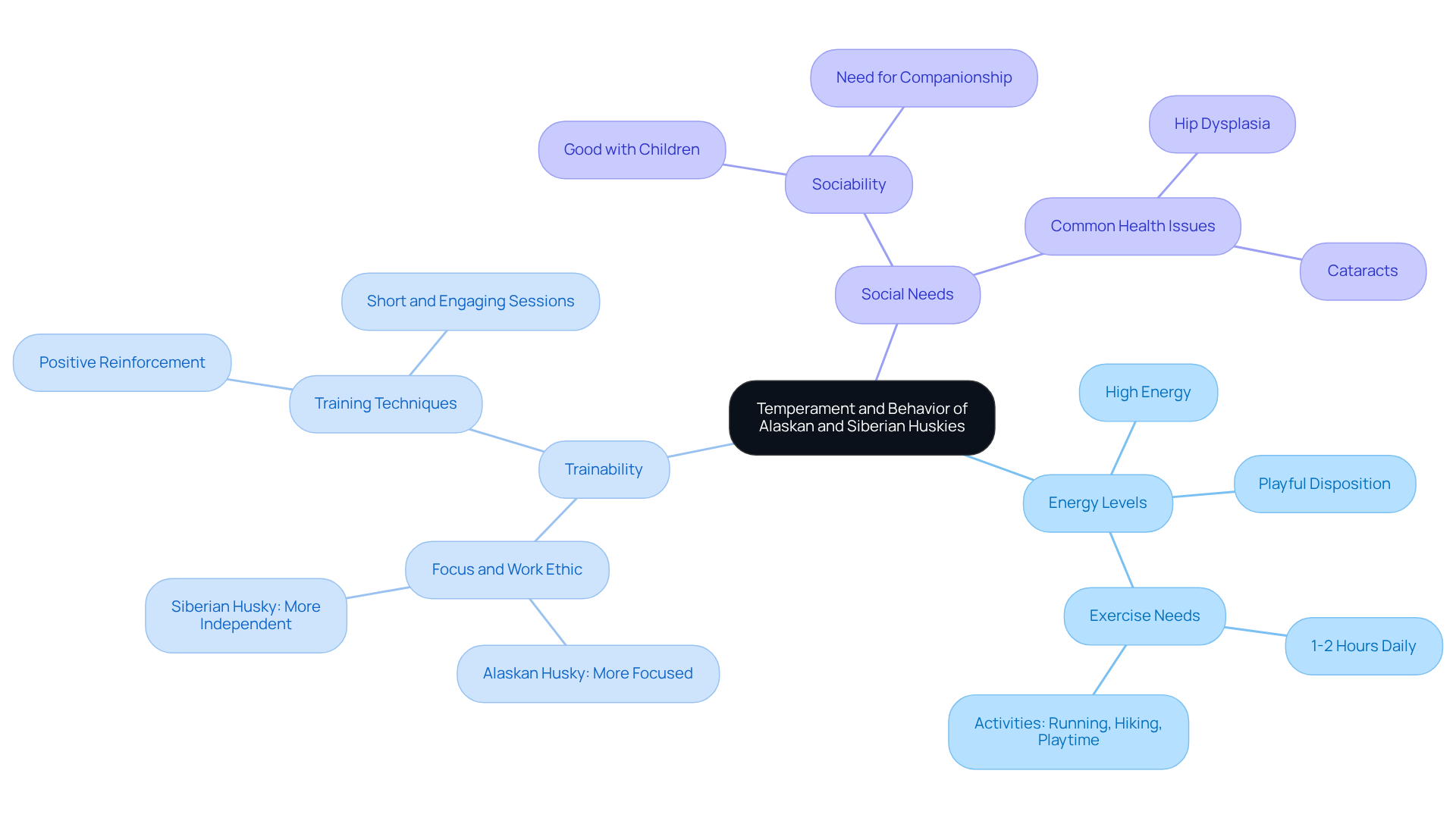
Examine Health Considerations: Common Issues and Lifespan
When it comes to the health of our northern dog breeds, particularly in the context of Alaskan Husky vs Siberian Husky, it’s essential to recognize the unique backgrounds that shape their well-being. Siberian dogs, known for their spirited nature, are generally healthy companions. However, they can be prone to certain genetic conditions, such as:
- Hip dysplasia
- Cataracts
- Progressive retinal atrophy
With a lifespan of 12 to 14 years, their health can greatly depend on genetics and the care they receive.
On the other hand, when considering Alaskan Husky vs Siberian Husky, Alaskan Huskies, being a mixed breed, may face a broader spectrum of health issues stemming from their diverse genetic lineage. Common concerns include:
- Hip dysplasia
- Glaucoma
- Epilepsy
Yet, these resilient dogs often enjoy a longer lifespan of 14 to 16 years.
To ensure that both breeds thrive, regular veterinary check-ups, a balanced diet that is high-quality and nutritionally complete, and proper exercise are vital. By prioritizing these health considerations, you can provide the necessary care and support for your furry family members. Understanding their needs not only enhances their quality of life but also strengthens the bond you share. Let’s work together to create a nurturing environment for your beloved pets.

Conclusion
The exploration of Alaskan Huskies versus Siberian Huskies reveals the unique traits and care requirements that distinguish these breeds, deeply rooted in their individual histories and purposes. Understanding these differences is essential for potential owners, as it directly influences the choice of a breed that aligns with their lifestyle and expectations.
Throughout this discussion, we’ve highlighted key aspects such as their origins, physical characteristics, temperament, and health considerations. Alaskan Huskies, bred for performance and versatility, possess a mixed lineage that contributes to their distinctive physical traits and health challenges. In contrast, Siberian Huskies, recognized as a purebred, are celebrated for their striking appearance and specific behavioral traits shaped by their historical roles in harsh environments. Both breeds require dedicated care, socialization, and exercise to thrive in a nurturing environment.
Ultimately, the decision to welcome either an Alaskan or Siberian Husky into your home should be made with thoughtful consideration of their specific needs and characteristics. By understanding their unique backgrounds and requirements, you can create a supportive atmosphere that fosters the health and happiness of these remarkable dogs. Embracing this knowledge not only enhances your pet ownership experience but also ensures a fulfilling relationship with your extraordinary companions.
Frequently Asked Questions
What are the main differences between Alaskan Huskies and Siberian Huskies?
Alaskan Huskies are not a purebred but a mix of multiple breeds developed for performance in sled dog racing and various working roles, while Siberian Huskies are purebred dogs bred by the Chukchi people of Siberia for their ability to pull sleds across vast distances.
What is the typical weight and height of Alaskan Huskies?
Alaskan Huskies typically weigh between 35-75 pounds and stand 20-24 inches tall.
How long do Alaskan Huskies usually live?
Alaskan Huskies enjoy a lifespan of 10-15 years.
What organizations recognize Siberian Huskies as purebred?
Organizations like the American Kennel Club (AKC) recognize Siberian Huskies as purebred.
What historical factors influenced the development of Alaskan and Siberian Huskies?
The development of Alaskan Huskies was shaped by the practical demands of sledding during events like the gold rush, while Siberian Huskies were influenced by the Chukchi people’s reliance on them for survival in harsh environments.
What health concerns should prospective owners be aware of for Huskies?
Prospective owners should be aware of health concerns such as Husky Encephalopathy (AHE) and Degenerative Myelopathy (DM).
What grooming needs do Huskies have?
Huskies have grooming needs that increase during shedding periods.
How does a Husky’s prey drive affect their compatibility with other animals?
Huskies have a strong prey drive, which can affect their compatibility with other animals, making careful introductions and supervision necessary.
What are the essential care requirements for Huskies?
To ensure their well-being, Huskies require mental stimulation and regular exercise, making it crucial for owners to provide ample physical activity.

